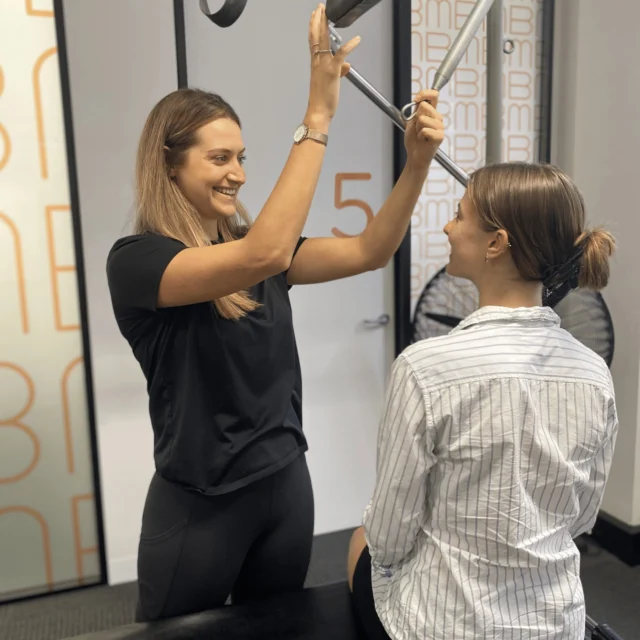Here at Bend + Mend we see our fair share of patients with tight and painful neck and shoulder areas. Sometimes a good firm (sometimes painful) rub will give temporary relief of muscle pain. However, if your muscles AND joints have become tight then massage alone will not be enough to fix them. If underlying sources are not addressed the muscle and joint tightness will persist.
The muscles that commonly become tight and sore include the trapezius (especially upper fibres), levator scapulae, rhomboids and the scaleni muscles in the neck. The facet joints beneath these muscles also commonly become stiff and painful. The pain which builds up in these muscles and joints is in response to the amount of strain they are put under.
With this in mind, there is a reason that one of the most common things we treat at our clinic in the CBD is neck and shoulder tightness. People with desk bound jobs may be spending the majority of the day looking like this!
This forward posture of the head and shoulders greatly increases the amount of strain that your neck and shoulder muscles and joints are put under. Over time they will become continuously tight and increasingly painful, unless something is done to correct the underlying cause.
There are several things you can do which will make a big difference:
- Unfortunately changing your posture is easier said than done…but it can be done! Set a reminder on your computer to re-check your posture throughout the day. Sit up as tall as you can at your desk.
- Perform regular stretches for the neck and shoulders to encourage the muscles to relax and the joints to move.
- Take regular breaks from your desk (every 30-60 minutes) to stand up, take a quick walk or even just look away from the computer screen, to prevent sustained strain on the muscles.
- Ensure your work station ergonomics are set up correctly and that your chair gives you adequate support. See our previous blog on work station ergonomics for more advice.
- Improving the strength of the deep neck stabilising muscles and the postural muscles will make maintaining correct posture much easier. Your physiotherapist can give you exercises to target these areas.
- Finally you should also consider stress levels as a factor as it is well known that stress can physically manifest itself as tension in the neck and shoulders.
You physiotherapist will be able to help with which approach including stretches and exercises are best for you. But remember that making a difference to stubborn shoulder and neck tension may be as simple as following the few tips above.





